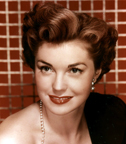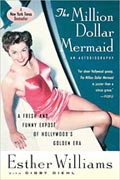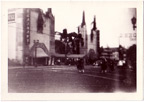Gene Kelly was born 104 years ago today in Pittsburgh, Pennsylvania, which seems apt, given that he was something of a blue-collar hoofer. As Kelly once put it, “Fred Astaire represented the aristocracy, I represented the proletariat.” Here are 10 GK Did-You-Knows:
- Kelly’s father was of Irish descent, and his mother was Irish and German.
- Kelly’s father was Al Jolson‘s road manager in the 1920s.
- He attended Penn State University for a while before graduating from the University of Pittsburgh with a degree in economics.
- At Pitt, Kelly was a member of the Phi Kappa Theta fraternity.
- He and his younger brother, Fred, had a dance act in vaudeville. Fred eventually replaced Gene as Harry the Hoofer in the 1939 Broadway production of The Time of Your Life.
- While Kelly was starring in Pal Joey on Broadway, he signed a contract with producer David O. Selznick. Selznick, after struggling to find a suitable role for Kelly, sold his contract to MGM.
- Kelly was fighting a high fever while filming the iconic rain scene in Singin’ in the Rain.
- The first two of Kelly’s three wives were dancers.
- He was a dance consultant for Madonna‘s 1993 Girlie Show tour.
- Kelly was awarded the National Medal of Arts by President Bill Clinton in 1994.
Happy birthday, Gene Kelly, wherever you may be!
















